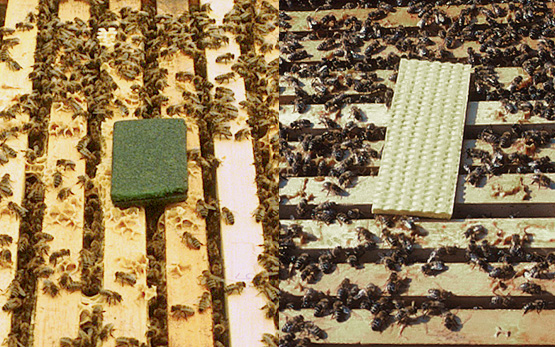Diogo V., von Ow A.
Assessing the environmental synergies and trade-offs of scenario-based transformations in the Swiss food system: current modelling approaches and opportunities for prospective LCA.
In: 89th LCA Discussion Forum - On the use of prospective LCA to support sustainability transitions. 5 February, Zürich (CH). 2025.
von Ow A.
Selbstversorgungsgrad und Versorgungssicherheit.
E-Agil, 3, 2024, 6-7.
other Languages:
french
von Ow A., Djanibekov U., Nemecek T., Reguant Closa A.
Perspektiven einer nachhaltigen Schweizer Landwirtschaft und Ernährung.
In: Jahresabschlussveranstaltung Ressourcenprojekt AquaSan. 2. Dezember, Publ. Kompetenzzentrum für die Landwirtschaft im Thurgau, Arenenberg (CH). 2024.
von Ow A., Djanibekov U., Nemecek T., Reguant Closa A.
Wie muss eine zukunftsfähige Landwirtschaft aussehen ?
In: VUTURUM. 24. November, Publ. SwissVeg, Zürich (CH). 2024.
von Ow A., Djanibekov U., Nemecek T., Reguant Closa A.
Perspektiven einer nachhaltigen Schweizer Landwirtschaft und Ernährung.
In: 47. Agrarökonomie-Tagung. 19. November, Publ. Agroscope, Tänikon (CH). 2024.
Ritzel C., Möhring A., von Ow A.
Vulnerability assessment of food imports: Conceptual framework and empirical application to the case of Switzerland.
Heliyon, 10, (5), 2024, 1-17.
Ritzel C., von Ow A.
Ernährungssicherheit der Schweiz 2023: Aktuelle Ereignisse und Entwicklungen.
Agroscope Science, 167, 2023.
Keel S., Bretscher D., Leifeld J., von Ow A., Wüst C.
Soil carbon sequestration potential bounded by population growth, land availability, food production, and climate change.
Carbon Management, 14, (1), 2023, 1-17.
von Ow A.
Ernährungssicherheit erfordert eine umfassende Sichtweise.
BauernZeitung, 7. Juni, 2022.
von Ow A.
Ernährungssicherheit erfordert eine umfassende Sichtweise.
Akademie der Naturwissenschaften Schweiz (SCNAT), online. 2022, 2022, 1 p.
von Ow A., Arbenz A., Ritzel C.
Ernährungssicherheit der Schweiz - Herausforderungen für die Lebensmittel-Wertschöpfungskette.
In: 45. Agrarökonomie-Tagung Agroscope. 04. Oktober, Publ. Agroscope Tänikon, Agroscope Tänikon. 2022.
Ritzel C., Arbenz A., von Ow A.
Ernährungssicherheit der Schweiz 2022: Aktuelle Ereignisse und Entwicklungen.
Agroscope Science, 135, 2022.
von Ow A., Möhring A., Ritzel C.
Aufbau eines Indikatorsystems zur Beurteilung der Verletzlichkeit der Nahrungsmittelimporte.
In: SGA-Tagung. 28. April, Frick - FiBL. 2022, 1-14.
von Ow A., Ritzel C.
Indikator- und Frühwarnsystem für die Ernährungssicherheit.
In: 31. Jahrestagung der Österreichischen Gesellschaft für Agrarökonomie. 16.-17. September, Publ. ÖGA. 2021, 75-76.
von Ow A.
Ernährungssicherheit der Schweiz 2021: Aktuelle Ereignisse und Entwicklungen.
Agroscope Science, 124, 2021.
von Ow A., Mann S.
Covid-19 und Ernährungssicherheit: Lehren aus historischen Krisen.
Agroscope Science, 103, 2020.
Mack G., Möhring A., von Ow A., Ferjani A., Mann S.
Modellprojektionen mit SWISSland zur AP22+. Technischer Bericht.
Agroscope Science, 97, 2020.
Mack G., Ferjani A., Möhring A., von Ow A., Mann S.
How did farmers act? Ex-post validation of linear and positive mathematical programming approaches for farm-level models implemented in an agent-based agricultural sector model.
Bio-based and Applied Economics, 8, (1), 2020, 3-19.
von Ow A., Waldvogel T., Nemecek T.
Environmental optimization of the Swiss population’s diet using domestic production resources.
Journal of Cleaner Production, online, (15 November), 2019, 1-15.
Zimmermann A., Nemecek T., von Ow A.
Stellung der Milch hinsichtlich der Umweltwirkungen der Ernährung in der Schweiz.
Schweizer Zeitschrift für Ernährungsmedizin, 3, 2019, 6-7.







